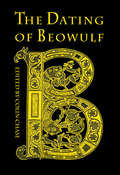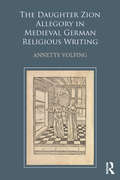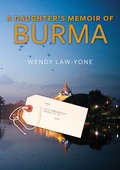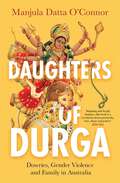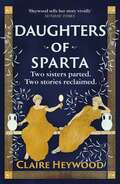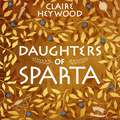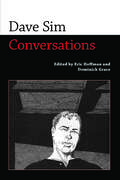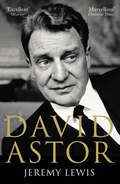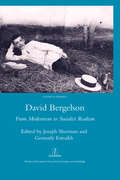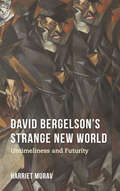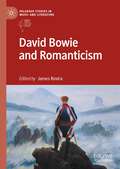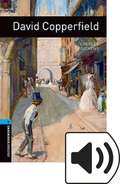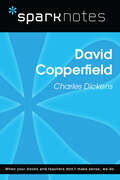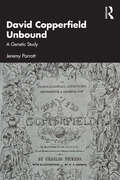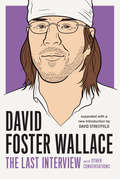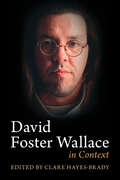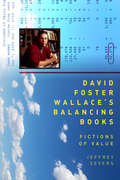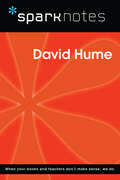- Table View
- List View
The Dating of Beowulf
by Colin ChaseThe date of Beowulf, debated for almost a century, is a small question with large consequences. Does the poem provide us with an accurate if idealized view of early Germanic culture? Or is it rather a creature of nostalgia and imagination, born of the desire of a later age to create for itself a glorious past? If we cannot decide when, between the 5th and 11th centuries, the poem was composed, we cannot distinguish what elements in Beowulf belong properly to the history of material culture, to the history of myth and legend, to political history, or to the development of the English literary imagination.This book represents both individual and concerted attempts to deal with this important question, and presents one of the most important inconclusions in the study of Old English. The contributors raise so many doubts, turn up so much new and disturbing information, dismantle so many long-accepted scholarly constructs that Beowulf studies will never be the same: henceforth every discussion of the poem and its period will begin with reference to this volume.
The Daughter Zion Allegory in Medieval German Religious Writing
by Annette VolfingThe Daughter Zion allegory represents a particular narrative articulation of the paradigm of bridal mysticism deriving from the Song of Songs, the core element of which is the quest of Daughter Zion for a worthy object of love. Examining medieval German religious writing (verse and prose) and Dutch prose works, Annette Volfing shows that this storyline provides an excellent springboard for investigating key aspects of medieval religious and literary culture. In particular, she argues, the allegory lends itself to an exploration of the medieval sense of self; of the scope of human agency within the mystical encounter; of the gendering of the religious subject; of conceptions of space and enclosure; and of fantasies of violence and aggression. Volfing suggests that Daughter Zion adaptations increasingly tended to empower the religious subject to seek a more immediate relationship with the divine and to embrace a wider range of emotions: the mediating personifications are gradually eliminated in favour of a model of religious experience in which the human subject engages directly with Christ. Overall, the development of the allegory from the twelfth to the fifteenth centuries marks the striving towards a greater sense of equality and affective reciprocity with the divine, within the context of an erotic union.
A Daughter's Memoir of Burma: A Daughter's Memoir Of Burma
by Wendy Law-YoneWendy Law-Yone was just fifteen when Burma's military staged a coup and overthrew the civilian government in 1962. The daughter of Ed Law-Yone, the daredevil founder and chief editor of The Nation, Burma's leading postwar English-language newspaper, she experienced firsthand the perils and promises of a newly independent Burma. On the eve of Wendy's studies abroad, Ed Law-Yone was arrested and The Nation shut down. Wendy herself was briefly imprisoned. After his release, Ed fled to Thailand with his family, where he formed a government-in-exile and tried, unsuccessfully, to foment a revolution. Exiled to America with his wife and children, Ed never gave up hope that Burma would one day adopt a new democratic government. Though he died disappointed, he left in his daughter's care an illuminating trove of papers documenting the experiences of an eccentric, ambitious, humorous, and determined patriot, vividly recounting the realities of colonial rule, Japanese occupation, postwar reconstruction, and military dictatorship. This memoir tells the twin histories of Law-Yone's kin and his country, a nation whose vicissitudes continue to intrigue the world.
A Daughter's Memoir of Burma
by David I. Steinberg Wendy Law-YoneWendy Law-Yone was fifteen at the time of Burma's military coup in 1962. The daughter of Ed Law-Yone, daredevil proprietor of Rangoon Nation, Burma's leading postwar English-language daily, she experienced firsthand the perils and promises of a newly independent Burma.On the eve of Wendy's studies abroad, Ed Law-Yone was arrested, his newspaper shut down, and Wendy herself was briefly imprisoned. After his release, Ed fled to Thailand with his family, where he formed a government-in-exile and tried, unsuccessfully, to foment a revolution. Emigrating to America with his wife and children, Ed never gave up hope that Burma would adopt a new democratic government. While he died disappointed, he left in his daughter's care an illuminating trove of papers documenting the experiences of an eccentric, ambitious, humorous, and determined patriot, vividly recounting the realities of colonial rule, Japanese occupation, postwar reconstruction, and military dictatorship. This book tells the twin histories of Law-Yone's kin and country, a nation whose vicissitudes continue to intrigue the world.
Daughters of Durga: Dowries, Gender Violence and Family in Australia
by Manjula Datta O'ConnorIn the early 2010s a spate of domestic violence-related murders in the Victorian Indian community compelled psychiatrist Manjula Datta O'Connor to investigate the causes of patriarchal abuse in South Asian families. As a practitioner with many decades experience in the field, Datta O'Connor questioned whether a better understanding of history and culture could help these communities implement measures to prevent family violence. But the most powerful lessons came from those she met through her practice - survivors of transnational abuse and of sexual and dowry exploitation. These women taught Datta O'Connor about human resilience and strength and the myriad ways women find the inner power to survive. These are the daughters of the goddess Durga, wielding the tools of history to produce meaningful change.
Daughters of Sparta: A tale of secrets, betrayal and revenge from mythology's most vilified women
by Claire HeywoodTwo sisters parted. Two women blamed. Two stories reclaimed.'Required reading for fans of Circe . . . a remarkable, thrilling debut' - Fiona Davis, New York Times bestselling author of The Lions of Fifth Avenue'Fluent and persuasive. I admire the ambition with which Heywood tackles the subject, to which she brings freshness and verve. I enjoyed it very much' - Elizabeth Buchan, bestselling author of The Museum of Broken PromisesFor millennia, two women have been blamed for the fall of a mighty civilisation - but now it's time to hear their side of the story . . .As princesses of Sparta, Helen and Klytemnestra have known nothing but luxury and plenty. With their high birth and unrivalled beauty, they are the envy of all of Greece.Such privilege comes at a high price, though, and their destinies are not theirs to command. While still only girls they are separated and married off to legendary foreign kings Agamemnon and Menelaos, never to meet again. Their duty is now to give birth to the heirs society demands and be the meek, submissive queens their men expect.But when the weight of their husbands' neglect, cruelty and ambition becomes too heavy to bear, they must push against the constraints of their sex to carve new lives for themselves - and in doing so make waves that will ripple throughout the next three thousand years.Perfect for readers of Circe and Ariadne, Daughters of Sparta is a vivid and illuminating retelling of the Siege of Troy that tells the story of mythology's most vilified women from their own mouths at long last.Helen of Troy and her sister Klytemnestra are reimagined in this gorgeous retelling of the classic Greek myth - not as women defined by their husbands and lovers but as battle-weary survivors of a patriarchal society who take control of their own destiny. Absolutely riveting!' - Alka Joshi, New York Times bestselling author of The Henna Artist
Daughters of Sparta: A tale of secrets, betrayal and revenge from mythology's most vilified women
by Claire HeywoodThe story of the Siege of Troy from the infamous Helen and her sister Klytemnestra's points of view - a tale of secrets, passion and revenge from the women behind mythology's most devastating war.Two sisters parted. Two women blamed. Two stories reclaimed.'Required reading for fans of Circe . . . a remarkable, thrilling debut' - Fiona Davis, New York Times bestselling author of The Lions of Fifth AvenueFor millennia, two women have been blamed for the fall of a mighty civilisation - but now it's time to hear their side of the story . . .As princesses of Sparta, Helen and Klytemnestra have known nothing but luxury and plenty. With their high birth and unrivalled beauty, they are the envy of all of Greece.Such privilege comes at a high price, though, and their destinies are not theirs to command. While still only girls they are separated and married off to legendary foreign kings Agamemnon and Menelaus, never to meet again. Their duty is now to give birth to the heirs society demands and be the meek, submissive queens their men expect.But when the weight of their husbands' neglect, cruelty and ambition becomes too heavy to bear, they must push against the constraints of their sex to carve new lives for themselves - and in doing so make waves that will ripple throughout the next three thousand years.Perfect for readers of Circe and Ariadne, Daughters of Sparta is a vivid and illuminating retelling of the Siege of Troy that tells the story of mythology's most vilified women from their own mouths at long last.Helen of Troy and her sister Klytemnestra are reimagined in this gorgeous retelling of the classic Greek myth - not as women defined by their husbands and lovers but as battle-weary survivors of a patriarchal society who take control of their own destiny. Absolutely riveting!' - Alka Joshi, New York Times bestselling author of The Henna Artist(P) 2021 Hodder & Stoughton Ltd
Dave Sim: Conversations (Conversations with Comic Artists Series)
by Eric Hoffman Dominick GraceIn 1977, Dave Sim (b. 1956) began to self-publish Cerebus, one of the earliest and most significant independent comics, which ran for 300 issues and ended, as Sim had planned from early on, in 2004. Over the run of the comic, Sim used it as a springboard to explore not only the potential of the comics medium but also many of the core assumptions of Western society. Through it he analyzed politics, the dynamics of love, religion, and, most controversially, the influence of feminism—which Sim believes has had a negative impact on society. Moreover, Sim inserted himself squarely into the comic as Cerebus's creator, thereby inviting criticism not only of the creation, but also of the creator. What few interviews Sim gave often pushed the limits of what an interview might be in much the same way that Cerebus pushed the limits of what a comic might be. In interviews Sim is generous, expansive, provocative, and sometimes even antagonistic. Regardless of mood, he is always insightful and fascinating. His discursive style is not conducive to the sound bite or to easy summary. Many of these interviews have been out of print for years. And, while the interviews range from very general, career-spanning explorations of his complex work and ideas, to tightly focused discussions on specific details of Cerebus, all the interviews contained herein are engaging and revealing.
David Adams Richards of the Miramichi
by Tony TremblayWidely considered to be one of Canada's most important authors, David Adams Richards has been honoured with a Giller Prize and two Governor General's Literary Awards. Despite this, there has been a dearth of critical appraisal of his life and works. In David Adams Richards of the Miramichi, Tony Tremblay sheds light not only on Richards' art and achievements, but also on Canadian literary criticism in general.Tremblay maps out the early influences on Richards' thinking and writing by drawing on interviews, archival records, and cultural studies of New Brunswick. He argues that the author is a more sophisticated craftsman than his critical reception has assumed and makes the case for a more nuanced analysis of his works. Equal parts literary biography, literary criticism, and cultural study of New Brunswick, David Adams Richards of the Miramichi provides a rare glimpse into the struggles and triumphs of a New Brunswick artist in a national and provincial milieu.
David Astor
by Jeremy LewisFew newspaper editors are remembered beyond their lifetimes, but David Astor of the Observer is a great exception to the rule. He converted a staid, Conservative-supporting Sunday paper into essential reading, admired and envied for the quality of its writers and for its trenchant but fair-minded views. Astor grew up at Cliveden, the country house on the Thames which his grandfather had bought when he turned his back on New York, the source of the family fortune. His liberal-minded father was a constant support, but his relations with his mother, Nancy, were always embattled. At Oxford he suffered the first of the bouts of depression that were to blight his life; a lost soul for much of the Thirties, he became involved in attempts to put the British Government in touch with the German opposition in the months leading up to the war. George Orwell had urged Astor to champion the decolonisation of Africa, and Nelson Mandela always acknowledged how much he owed to the Observer’s long-standing support. A generous benefactor to good causes, he helped to set up Amnesty International and Index on Censorship. A good man and a great editor, he deserves to be better remembered.
David Bergelson: From Modernism to Socialist Realism. Proceedings of the 6th Mendel Friedman Conference
by Joseph Sherman"Among the finest prose stylists in Yiddish literature, David Bergelson (1884-1952) was caught up in many of the twentieth century's most defining events. In 1909 he emerged as a pioneer of modernist prose, observing the slow decay of the Tsarist empire. In 1917 he welcomed the Revolution, but the bloodshed of the ensuing Civil War and the dogmatism of the Bolsheviks drove him to emigration. For more than a decade (1921-1934), he lived in Weimar Germany, travelling extensively in Europe and the United States. Shocked by the Wall Street Crash of 1929, disheartened by the decline of Yiddish culture in the West, and inspired by Soviet promises to create a Jewish republic, Bergelson became a Communist sympathiser and moved towards socialist realism. Returning to the Soviet Union after Hitler's rise to power, Bergelson flourished in a state-sponsored cultural environment in which his work was widely read both in Yiddish and in Russian translation. After Hitler's invasion of the Soviet Union in 1941, Bergelson became a prominent member of the Jewish Anti-Fascist Committee, writing extensively about the Holocaust. In the paranoia of the Cold War years, the Stalinist regime accused him of anti-Soviet activities and, after a secret military trial he was executed on 12 August 1952, his 68th birthday. For years, critics have argued that Bergelson produced his best work before the Revolution, and afterwards largely wrote Communist propaganda. David Bergelson: From Modernism to Socialist Realism challenges this view by examining Bergelson's entire oeuvre. The book argues that Bergelson continually reinvented himself as a writer, experimenting with style and narrative technique even under the most severe restrictions of Party dogma. With contributions from an international team of Bergelson experts, the volume offers a full-length biography, the first complete bibliography of Bergelson's work, translations of two of his most influential programmatic articles, and a range of essays dealing with all periods of the writer's life. With the contributions: Joseph Sherman- David Bergelson (1884-1952): A Biography Lev Bergelson- Memories of My Father: The Early Years (1918-1934) Daniela Mantovan- Language and Style in Nokh alemen (1913): Bergelson's Debt to Flaubert Kerstin Hoge- For Children and Adults Alike: Reading Bergelson's 'Children's Stories' (1914-1919) as Narratives of Identity Formation Seth L. Wolitz- Yoysef Shor (1922): Between Two Worlds Sasha Senderovich- In Search of Readership: Bergelson Among the Refugees (1928) Mikhail Krutikov- Narrating the Revolution: From 'Tsugvintn' (1922) to Mides-hadin (1929) Ellen Kellman- Uneasy Patronage: Bergelson's Years at Forverts (1922-1926) Gennady Estraikh- David Bergelson in and on America (1929-1949) Ber Boris Kotlerman- 'Why I am in Favour of Birobidzhan': Bergelson's Fateful Decision (1932) Harriet Murav- Memory and Monument in Baym Dnyepr (1932-1940) David Shneer- From Mourning to Vengeance: Bergelson's Holocaust Journalism (1941-1945) Jeffrey Veidlinger- 'Du lebst, mayn folk': Bergelson's Play Prints Ruveni in Historical Context (1944-1947) Joseph Sherman- 'Jewish Nationalism' in Bergelson's Last Book (1947) Roberta Saltzman- A Bibliography of David Bergelson's Work in Yiddish and English David Bergelson- Appendix A. Belles-lettres and the Social Order (1919) David Bergelson- Appendix B. Three Centres (Characteristics) (1926)"
David Bergelson's Strange New World: Untimeliness and Futurity (Jews in Eastern Europe)
by Harriet MuravDavid Bergelson (1884–1952) emerged as a major literary figure who wrote in Yiddish before WWI. He was one of the founders of the Kiev Kultur-Lige and his work was at the center of the Yiddish-speaking world of the time. He was well known for creating characters who often felt the painful after-effects of the past and the clumsiness of bodies stumbling through the actions of daily life as their familiar worlds crumbled around them. In this contemporary assessment of Bergelson and his fiction, Harriet Murav focuses on untimeliness, anachronism, and warped temporality as an emotional, sensory, existential, and historical background to Bergleson’s work and world. Murav grapples with the great modern theorists of time and memory, especially Henri Bergson, Sigmund Freud, and Walter Benjamin, to present Bergelson as an integral part of the philosophical and artistic experiments, political and technological changes, and cultural context of Russian and Yiddish modernism that marked his age. As a comparative and interdisciplinary study of Yiddish literature and Jewish culture, this work adds a new, ethnic dimension to understandings of the turbulent birth of modernism.
David Bergelson's Strange New World: Untimeliness and Futurity (Jews In Eastern Europe Ser.)
by Harriet MuravA contemporary evaluation of Bergelson and his works, examining Yiddish literature, Jewish culture, and modernism.David Bergelson (1884–1952) emerged as a major literary figure who wrote in Yiddish before WWI. He was one of the founders of the Kiev Kultur-Lige, and his work was at the center of the Yiddish-speaking world of the time. He was well known for creating characters who often felt the painful after-effects of the past and the clumsiness of bodies stumbling through the actions of daily life as their familiar worlds crumbled around them. In this contemporary assessment of Bergelson and his fiction, Harriet Murav focuses on untimeliness, anachronism, and warped temporality as an emotional, sensory, existential, and historical background to Bergleson’s work and world. Murav grapples with the great modern theorists of time and memory, especially Henri Bergson, Sigmund Freud, and Walter Benjamin, to present Bergelson as an integral part of the philosophical and artistic experiments, political and technological changes, and cultural context of Russian and Yiddish modernism that marked his age. As a comparative and interdisciplinary study of Yiddish literature and Jewish culture, this work adds a new, ethnic dimension to understandings of the turbulent birth of modernism.“Harriet Murav treats Bergelson with the care and sincerity that literary critics have shown other important writers. This is a masterpiece of literary scholarship that will be sure to transform not only how people read Bergelson and who chooses to read Bergelson, but how readers engage with the entire concept of modernism itself.” —David Shneer, author of Yiddish and the Creation of Soviet Jewish Culture: 1918-1930
David Bowie and Romanticism (Palgrave Studies in Music and Literature)
by James RoviraDavid Bowie and Romanticism evaluates Bowie’s music, film, drama, and personae alongside eighteenth- and nineteenth-century poets, novelists, and artists. These chapters expand our understanding of both the literature studied as well as Bowie’s music, exploring the boundaries of reason and imagination, and of identity, gender, and genre. This collection uses the conceptual apparata and historical insights provided by the study of Romanticism to provide insight into identity formation, drawing from Romantic theories of self to understand Bowie’s oeuvre and periods of his career. The chapters discuss key themes in Bowie’s work and analyze what Bowie has to teach us about Romantic art and literature as well.
David Copperfield
by Charles Dickens Clare WestThis award-winning collection of adapted classic literature and original stories develops reading skills.
David Copperfield (SparkNotes Literature Guide Series)
by SparkNotesDavid Copperfield (SparkNotes Literature Guide) by Charles Dickens Making the reading experience fun! Created by Harvard students for students everywhere, SparkNotes is a new breed of study guide: smarter, better, faster.Geared to what today's students need to know, SparkNotes provides:chapter-by-chapter analysis explanations of key themes, motifs, and symbols a review quiz and essay topics Lively and accessible, these guides are perfect for late-night studying and writing papers.
David Copperfield Unbound: A Genetic Study
by null Jeremy ParrottDavid Copperfield was Dickens's most personal novel, a first-person narrative that reworked details of both the author's lived experience and his complex psychological profile. The present study is a highly original exploration of the sources and motivations underpinning this canonical work, treated here as a melting pot of ideas and a proto-modernist masterpiece. Jeremy Parrott casts himself as a literary detective, tracking down clues hidden in the text, following in Dickens's footsteps, and laying bare a previously unsuspected symbolic scaffolding which ranges across Greek mythology, English history, Romantic poetry, and the latest advances in science. Following the example set by Betsey Trotwood, every proper name in this enormously rich text is subjected to rigorous analysis, laying bare the deepest currents of Dickens's mind and showing him to be an even greater artist than previously imagined. From the search for an elephant in Great Yarmouth to the discovery of the mysterious reader whom Dickens loved in 1850, this engaging and readable study will radically alter what you thought you knew about the best-loved Victorian novelist and his own 'favourite child'.
David Foster Wallace: and Other Conversations (The Last Interview Series)
by David Streitfeld David Foster WallaceAn expanded edition featuring new interviews and an introduction by the editor, a New York Times journalist and friend of the authorA unique selection of the best interviews given by David Foster Wallace, including the last he gave before his suicide in 2008. Complete with an introduction by Foster Wallace's friend and NY Times journalist, David Streitfeld. And including a new, never-before-published interview between Streitfeld and Wallace.
David Foster Wallace: and Other Conversations (The Last Interview Series)
by David Foster WallaceIn intimate and eloquent interviews, including the last he gave before his suicide, the writer hailed by A.O. Scott of The New York Times as "the best mind of his generation" considers the state of modern America, entertainment and discipline, adulthood, literature, and his own inimitable writing style.In addition to Wallace's last interview, the volume features a conversation with Dave Eggers, a revealing Q&A with the magazine of his alma mater Amherst, his famous Salon interview with Laura Miller following the publication of Infinite Jest, and more.These conversations showcase and illuminate the traits for which Wallace remains so beloved: his incomparable humility and enormous erudition, his wit, sensitivity, and humanity. As he eloquently describes his writing process and motivations, displays his curiosity by time and again turning the tables on his interviewers, and delivers thoughtful, idiosyncratic views on literature, politics, entertainment and discipline, and the state of modern America, a fuller picture of this remarkable mind is revealed.
David Foster Wallace and the Body (Routledge Studies in Contemporary Literature)
by Peter SloaneDavid Foster Wallace and the Body is the first full-length study to focus on Wallace’s career-long fascination with the human body and the textual representation of the body. The book provides engaging, accessible close readings that highlight the importance of the overlooked, and yet central theme of all of this major American author’s works: having a body. Wallace repeatedly made clear that good fiction is about what it means to be a ‘human being’. A large part of what that means is having a body, and being conscious of the conflicts that arise, morally and physically, as a result; a fact with which, as Wallace forcefully and convincingly argues, we all desire ‘to be reconciled’. Given the ubiquity of the themes of embodiment in Wallace’s work, this study is an important addition to an expanding field. The book also opens up the themes addressed to interrogate aspects of contemporary literature, culture, and society more generally, placing Wallace’s works in the history of literary and philosophical engagements with the brute fact of embodiment.
David Foster Wallace in Context (Literature in Context)
by Clare Hayes-BradyDavid Foster Wallace is regarded as one of the most important American writers of the twentieth and twenty-first centuries. This book introduces readers to the literary, philosophical and political contexts of Wallace's work. An accessible and useable resource, this volume conceptualizes his work within long-standing critical traditions and with a new awareness of his importance for American literary studies. It shows the range of issues and contexts that inform the work and reading of David Foster Wallace, connecting his writing to diverse ideas, periods and themes. Essays cover topics on gender, sex, violence, race, philosophy, poetry and geography, among many others, guiding new and long-standing readers in understanding the work and influence of this important writer.
David Foster Wallace's Balancing Books: Fictions of Value
by Jeffrey SeversThe writing of David Foster Wallace transformed the root and branch of contemporary fiction, introducing a formal inventiveness that moved authors away from an emotionless postmodern irony. Critics have pointed to Wallace’s exploration of morality and a return to sincerity as the central concerns of his work. However, as Jeffrey Severs argues in David Foster Wallace’s Balancing Books, the author was also deeply engaged with the social, political, and economic issues of the twentieth and twenty-first centuries. A rebellious economic thinker, Wallace not only satirized the deforming effects of money but also questioned the logic of the monetary system. In his original readings of all of Wallace’s fiction, from The Broom of the System and Infinite Jest to the story collections and The Pale King, Severs reveals Wallace to be a thoroughly political writer whose works provide an often surreal history of financial crises and neoliberal policies.As Severs demonstrates, balance and value are crucial to the work of Wallace, who constantly asks us to consider what we value and why. The concept of value is where his major interests intersected: economics, work, metaphysics, mathematics, and morality. Severs also details how Wallace’s writing explores the quest for balance in a world of excess and entropy. Wallace showed characters struggling to place two feet on the ground and restlessly sought to balance the books of a chaotic culture. Explaining why Wallace’s work has galvanized a new phase in contemporary global literature, Severs draws connections to key forerunners Don DeLillo, Thomas Pynchon, and William Gaddis, as well as successors-including Dave Eggers, Teddy Wayne, Jonathan Lethem, and Zadie Smith-interpreting Wallace’s legacy in terms of finance, the gift, and office life.
David Foster Wallace's Balancing Books: Fictions of Value
by Jeffrey SeversWhat do we value? Why do we value it? And in a neoliberal age, can morality ever displace money as the primary means of defining value? These are the questions that drove David Foster Wallace, a writer widely credited with changing the face of contemporary fiction and moving it beyond an emotionless postmodern irony. Jeffrey Severs argues in David Foster Wallace's Balancing Books that Wallace was also deeply engaged with the social, political, and economic issues of the twentieth and twenty-first centuries. A rebellious economic thinker, Wallace satirized the deforming effects of money, questioned the logic of the monetary system, and saw the world through the lens of value's many hidden and untapped meanings. In original readings of all of Wallace's fiction, from The Broom of the System and Infinite Jest to his story collections and The Pale King, Severs reveals Wallace to be a thoroughly political writer whose works provide an often surreal history of financial crises and economic policies.As Severs demonstrates, the concept of value occupied the intersection of Wallace's major interests: economics, work, metaphysics, mathematics, and morality. Severs ranges from the Great Depression and the New Deal to the realms of finance, insurance, and taxation to detail Wallace's quest for balance and grace in a world of excess and entropy. Wallace showed characters struggling to place two feet on the ground and restlessly sought to "balance the books" of a chaotic culture. Explaining why Wallace's work has galvanized a new phase in contemporary global literature, Severs draws connections to key Wallace forerunners Don DeLillo, Thomas Pynchon, and William Gaddis, as well as his successors—including Dave Eggers, Teddy Wayne, Jonathan Lethem, and Zadie Smith—interpreting Wallace's legacy in terms of finance, the gift, and office life.
David Hume (SparkNotes Philosophy Guide)
by SparkNotesDavid Hume (SparkNotes Philosophy Guide) Making the reading experience fun! SparkNotes Philosophy Guides are one-stop guides to the great works of philosophy–masterpieces that stand at the foundations of Western thought. Inside each Philosophy Guide you&’ll find insightful overviews of great philosophical works of the Western world.
David Hume: Historical Thinker, Historical Writer
by Mark G. SpencerThis volume provides a new and nuanced appreciation of David Hume as a historian. Gone for good are the days when one can offhandedly assert, as R. G. Collingwood once did, that Hume “deserted philosophical studies in favour of historical” ones. History and philosophy are commensurate in Hume’s thought and works from the beginning to the end. Only by recognizing this can we begin to make sense of Hume’s canon as a whole and see clearly his many contributions to fields we now recognize as the distinct disciplines of history, philosophy, political science, economics, literature, religious studies, and much else besides. Casting their individual beams of light on various nooks and crannies of Hume’s historical thought and writing, the book’s contributors illuminate the whole in a way that would not be possible from the perspective of a single-authored study.Aside from the editor, the contributors are David Allan, M. A. Box, Timothy M. Costelloe, Roger L. Emerson, Jennifer Herdt, Philip Hicks, Douglas Long, Claudia M. Schmidt, Michael Silverthorne, Jeffrey M. Suderman, Mark R. M. Towsey, and F. L. van Holthoon.
